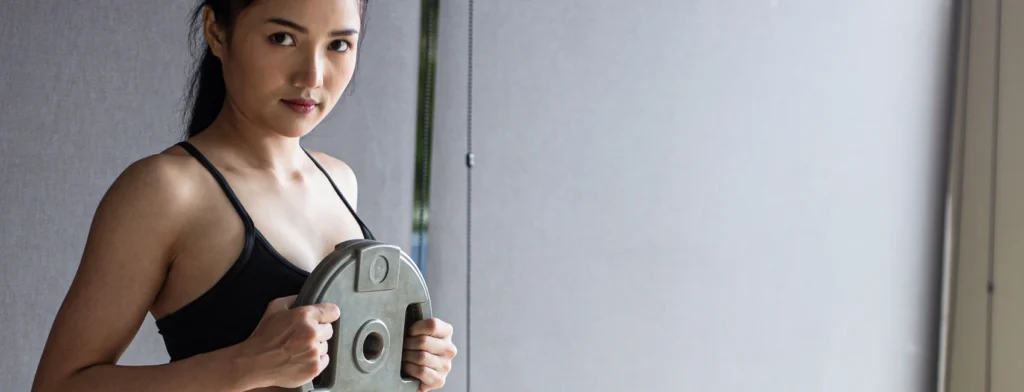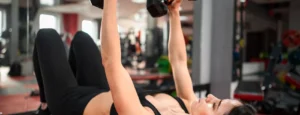Wood choppers, also known as standing cable wood choppers or standing medicine ball wood choppers, are a compound exercise that engages multiple muscle groups and promotes functional movement patterns. This exercise mimics the motion of chopping wood and primarily targets the core muscles, including the rectus abdominis, obliques, and transverse abdominis. However, it also involves the shoulders, back, hips, and legs, making it a comprehensive full-body exercise.
The wood choppers exercise requires a twisting motion, which activates the muscles responsible for rotational movements and stability. As you rotate your torso and bring the cable or medicine ball across your body, the core muscles are engaged to generate power and control the movement. This helps strengthen the muscles deep within the abdomen and sides, promoting core stability and enhancing overall functional fitness.
In addition to the core muscles, wood choppers also work the muscles in the shoulders and back. As you perform the twisting motion, the muscles in your upper back, such as the rhomboids, trapezius, and rear deltoids, are activated to stabilize and control the movement. The shoulders play a crucial role in generating force and facilitating the twisting motion, thereby contributing to shoulder strength and stability.
The hips and legs are also involved in the wood choppers exercise. When you initiate the movement from a standing position, the muscles in the lower body, including the quadriceps, hamstrings, glutes, and calves, are engaged to provide stability and generate power. This makes the exercise a great option for targeting the lower body muscles while simultaneously working on core strength and stability.
Wood choppers promote functional movement patterns that are applicable to daily activities and sports. The twisting motion involved in wood choppers mimics actions like reaching, twisting, and rotating, which are commonly performed in everyday tasks. By incorporating wood choppers into your workout routine, you can improve your ability to perform these movements with greater ease, efficiency, and reduced risk of injury.
You also don’t need a machine – you can use a dumbbell or medicine ball (as noted) in place of a cable machine.
Overall, wood choppers offer several benefits, including improved core strength, enhanced stability and balance, increased shoulder and back strength, and the promotion of functional movement patterns. As a compound exercise that targets multiple muscle groups simultaneously, wood choppers are an efficient and effective way to work your entire body in a single movement. Remember to maintain proper form, start with an appropriate weight or resistance level, and progress gradually to ensure safety and maximize the benefits of this exercise.
Wood Choppers – Instructions & Steps
- Grab a weight or medicine ball. Hold the weight by the ends, one in each hand and not the bar.
- Stand with your feet wider than your hip length
- Raise the weight above your head to the upper right
- In a swinging motion, bring the weight across your body towards the left
- While you do this, bend your right knee and pivot on the ball of your right foot, turning inwards
- Assume a plank position with your arms and legs straight, and your hands about should width apart
- You should end twisted and the weight near your left side, so pivot back until the weight is near the top right once again
- Once you have completed the reps, switch sides and start on the upper left and swing to your right, pivoting on your left foot
Benefits of Wood Choppers
Wood choppers, whether performed with a weight such as a dumbbell or a medicine ball, offer several benefits for individuals looking to improve their fitness and overall well-being. Here are some of the key benefits of incorporating wood choppers into your workout blend.
Core Strength and Stability
Wood choppers primarily target the core muscles, including the rectus abdominis, obliques, and transverse abdominis. By engaging and strengthening these muscles, wood choppers can enhance core stability and improve posture. A strong core is crucial for maintaining proper alignment, reducing the risk of lower back pain, and supporting overall functional movements.
Full-Body Workout
Wood choppers engage multiple muscle groups simultaneously, making it a compound exercise that provides a full-body workout. In addition to the core, the shoulders, back, hips, and legs are actively involved in performing the twisting and rotating motions. This allows you to maximize your training time by working multiple muscles and areas of your body in a single exercise.
Functional Movement Patterns
The twisting motion of wood choppers mirrors many real-life movements, such as reaching, twisting, and rotating. By training these functional movement patterns, you can improve your ability to perform daily activities and sports with greater ease and efficiency. This can be particularly beneficial for individuals with physically demanding jobs or those who participate in sports or recreational activities.
Improved Coordination and Balance
Wood choppers require coordination between the upper and lower body as you perform the twisting motion while maintaining balance and control. Regularly incorporating wood choppers into your routine can enhance your coordination and proprioception, which is essential for activities that involve multi-directional movements and dynamic balance.
Calorie Burning and Fat Loss
Due to the dynamic nature of wood choppers and the engagement of multiple muscle groups, they can contribute to increased calorie expenditure and promote fat loss. This exercise elevates your heart rate and requires a significant amount of energy, making it an effective addition to a well-rounded cardiovascular and weight management program.
Versatility and Adaptability
Wood choppers can be modified to suit different fitness levels and equipment availability. Whether using a cable machine, resistance bands, or a medicine ball, you can adjust the resistance and intensity to match your abilities. This versatility allows individuals of varying fitness levels to benefit from the exercise and gradually progress as their strength and skill improve.
More About Wood Choppers
Wood choppers are considered compound exercises. They are dynamic movements that involve multiple muscle groups working together to mimic the twisting motion used when chopping wood. Wood choppers can be performed with various equipment, such as a medicine ball, cable machine, or resistance bands.
During wood choppers, the following muscle groups are engaged:
- Obliques: The muscles on the sides of the waist are the primary movers during the twisting motion.
- Rectus abdominis: The central abdominal muscles assist in generating power and stabilizing the core.
- Transverse abdominis: The deep core muscles are engaged to stabilize the spine and pelvis.
- Latissimus dorsi: The broad muscles of the back are involved to some extent in the pulling motion.
- Shoulders: The deltoid muscles help in lifting and controlling the movement.
- Hip muscles: The muscles around the hips, such as the glutes and hip flexors, are engaged to support the twisting motion.
- Leg muscles: Muscles in the legs are activated to provide a stable base during the exercise.
Wood choppers are effective compound exercises for building core strength, rotational power, and stability. They are often used in functional training and sports conditioning programs to improve athletic performance and overall body coordination.
Since wood choppers involve twisting and rotational movements, they are valuable for targeting the obliques and core muscles in a way that many traditional exercises don’t. Additionally, wood choppers can be adapted to suit various fitness levels and equipment availability, making them a versatile addition to any workout routine.



